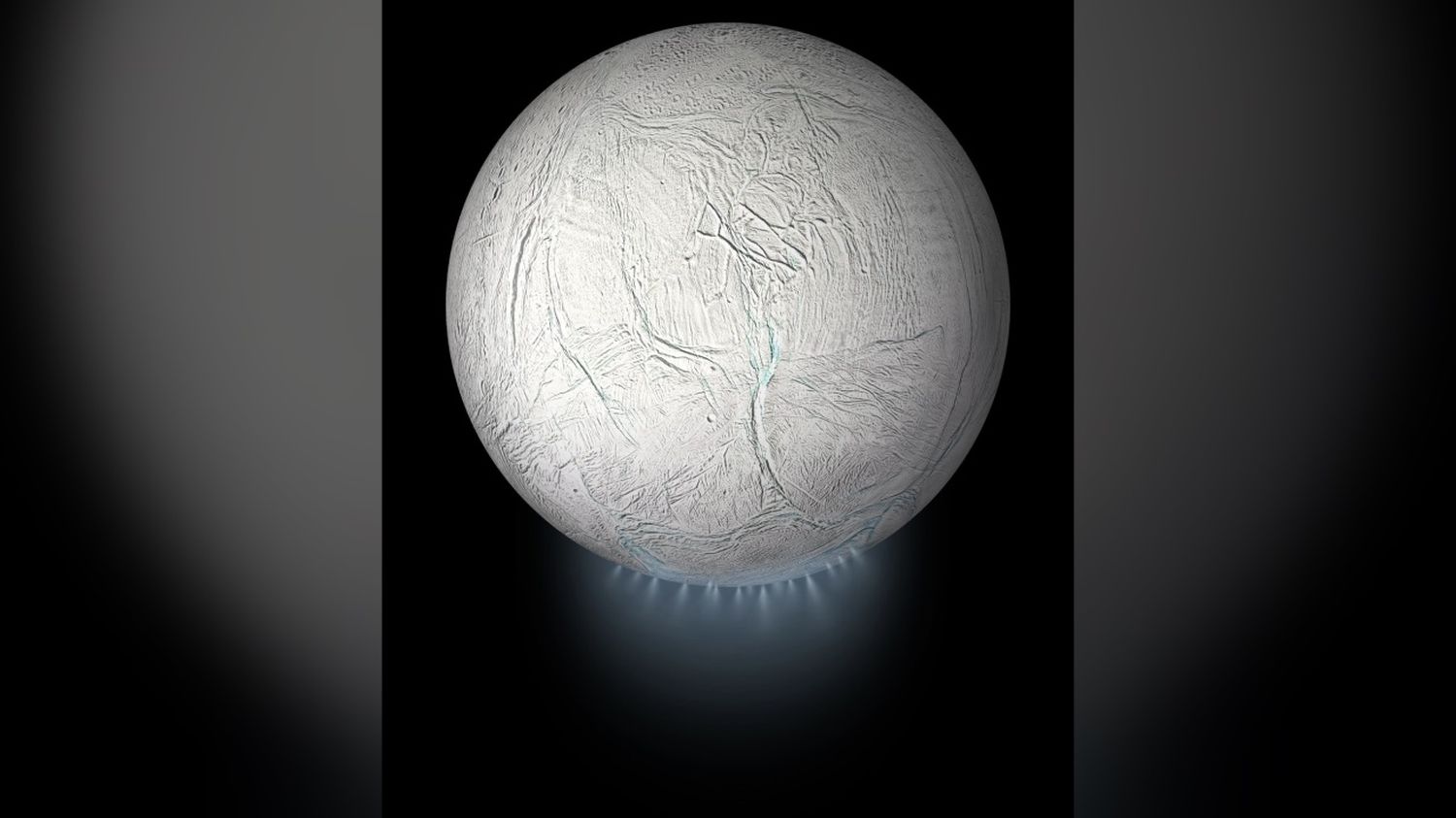We’re off to Jupiter, where we’ve discovered a giant steam plume.
Mathilde Fontez, editor-in-chief at the magazine Epsiloon, today evokes a new discovery from the James Webb Space Telescope: a plume, a giant cloud of water vapor escaping from a moon of Jupiter.
franceinfo: Explain to us Mathilde, how was this cloud discovered?
Mathilde Fontez: Yes, the James Webb Telescope was sent into space to observe ultra-distant galaxies, planets around other stars. But it is sometimes pointed at our solar system. This is what happened in November 2022: it turned for 4 and a half minutes towards the giant Jupiter, and more precisely one of its moons, Enceladus. And he saw a gigantic cloud of water vapour.
A cloud that escapes from this moon?
Yes, this little moon is icy. It is covered with a very white pack ice. It was the Cassini space probe, which observed it closely until 2017, which sent incredible images of this surface – it does not look like our Moon at all. No craters, but fractures in the pack ice: this is where water vapor escapes.
Cassini had seen these plumes before. But there, what the James Webb telescope seems to see is much, much bigger. The steam eruption would span several times the size of the Moon.

Where does this steam come from?
Of an ocean, hidden under the pack ice. And that is what particularly interests researchers: Enceladus would have a thin crust of about twenty or thirty kilometers of ice, and below, there would be a huge salty ocean. An ocean that could be driven by hydrothermal activity, ocean circulation. And which could be a refuge for biological organisms, for life.
It is a sample of this ocean which would escape through the fractures of the ice floe of Enceladus, and which would spread out in space. It would therefore make it possible to analyze it, without having to send a probe and dig – which remains a technical challenge. The Cassini probe passed several times in these plumes, and it made a start of analysis: it found silica which could come from the bottom of the ocean of Enceladus, traces of methane, propane, formaldehyde. These are hydrocarbons, carbon molecules, these molecules at the base of life.
And the James Webb Telescope was able to analyze the plume?
No information filter for the moment. The discovery was only announced at a scientific congress last week. We will have to wait for scientific publications. But already, another observation of Enceladus has already been added to the telescope program in a few months. It will be longer, it should collect more data from this plume. To be continued then.
